
Create automated tests in seconds.
4 min read
November 2, 2023
We can all agree that test automation is an essential aspect of software development, helping teams achieve faster feedback, improved efficiency, and enhanced product quality. However, the journey towards successful test automation is challenging. To help you get started, AutomatePro’s very own CEO and Co-Founder, Paul Chorley, has summarised his Kyenote speech that was delivered in front of 400 test experts from across Europe. Chorley unravels the 7 most common test automation pitfalls and how to overcome them.
Pitfall 1 – Lack of Strategy and Planning
Sometimes, the reason test automation fails is simply because of an underestimation of the time and effort required. Resulting in the project being deprioritised or, even worse, stopped before completion.
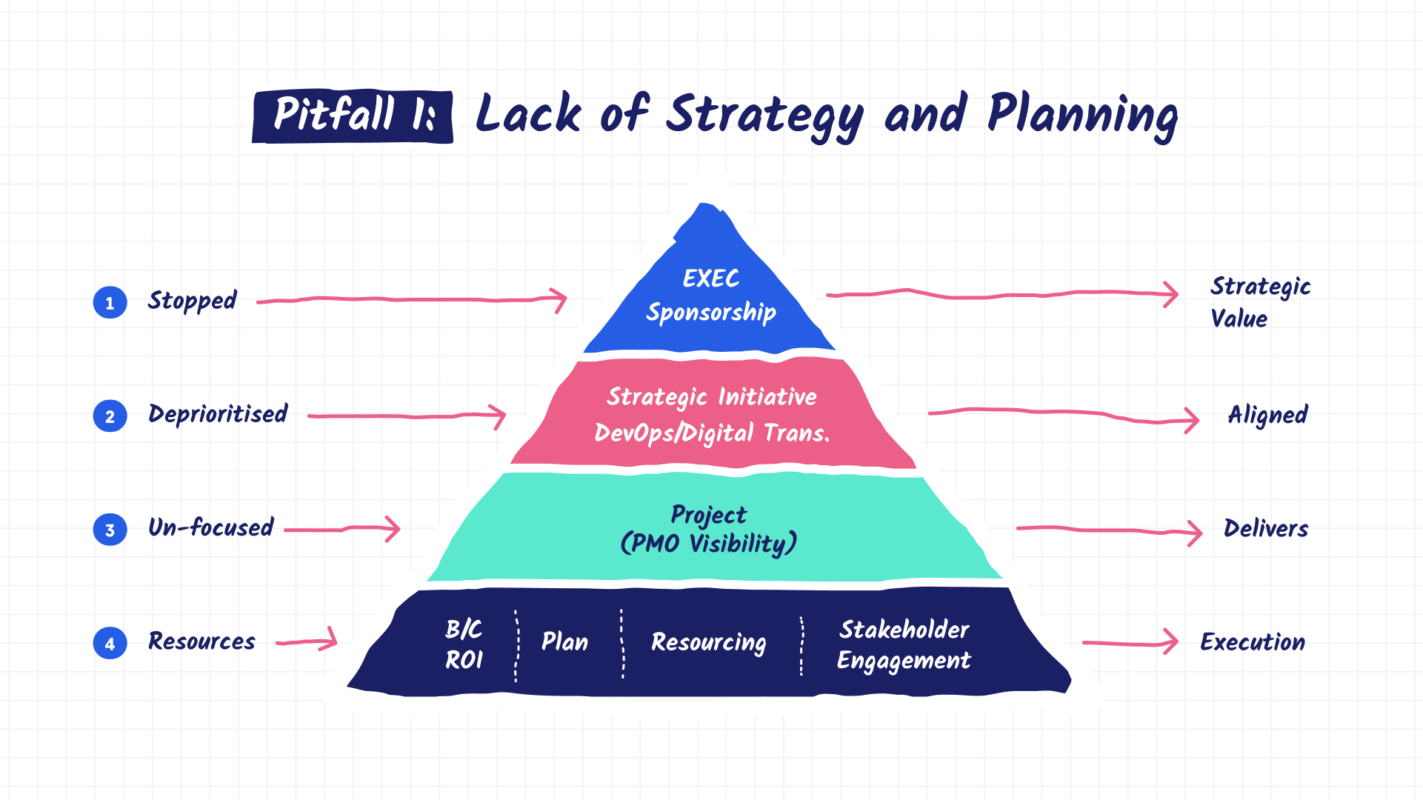
Pitfall 1 - Lack of Strategy and Planning
To mitigate this problem, it is essential to get buy-in from key stakeholders, i.e. the Chief Information Officer and IT Director. Having senior-level endorsement is critical to assuring that you have adequate resources and to position test automation as a strategic project. That will help the organisation achieve its overarching objectives.
Pitfall 2 – Poor Tool Selection
There is a plethora of Test Automation tools available to customers, but they aren’t always as transformational as they appear. Customers should avoid purchasing a solution that falls into these categories.

Pitfall 2 - Poor Tool Selection
Pitfall 3 – Lack of scalability
Over time, tests grow in complexity, necessitating broader test coverage. As a result, the traditional Test Pyramid advocates for unit tests to be performed in larger quantities than API and UI tests because they are faster and more adaptable to UI changes.
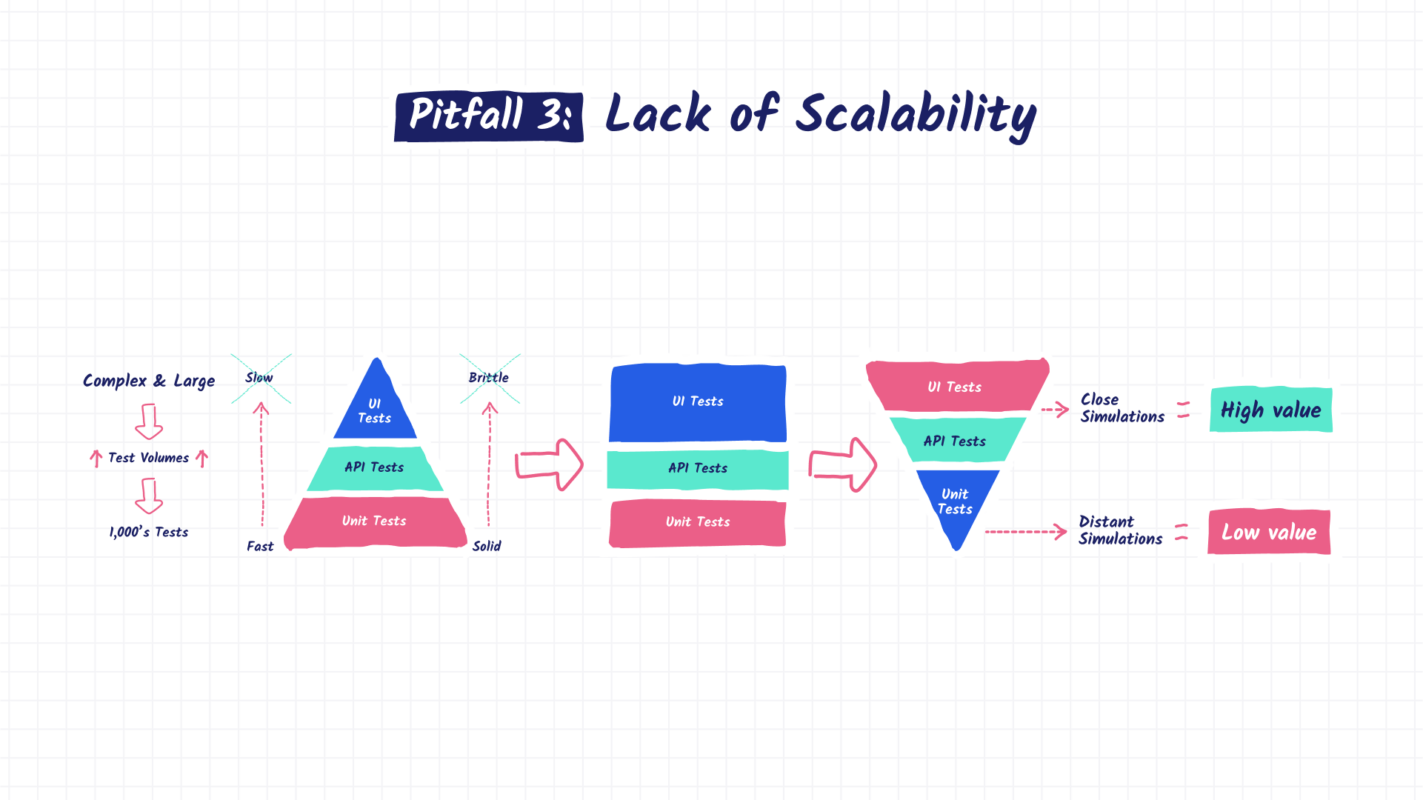
Pitfall 3 - Lack of Scalability
Alternative approaches emphasise balancing out unit, API and UI tests as they are faster and stronger due to the advancements in test automation. However, contemporary perspectives flip the traditional approach by conducting more UI tests. UI tests provide greater value to end users because they are a closer simulation of how the systems will be utilised.
Pitfall 4 – Brittle Tests
Anyone who’s ever worked in test automation can relate to agonising over brittle tests and their impact when a system change is made. Below are the four main reasons why tests are categorised as brittle.
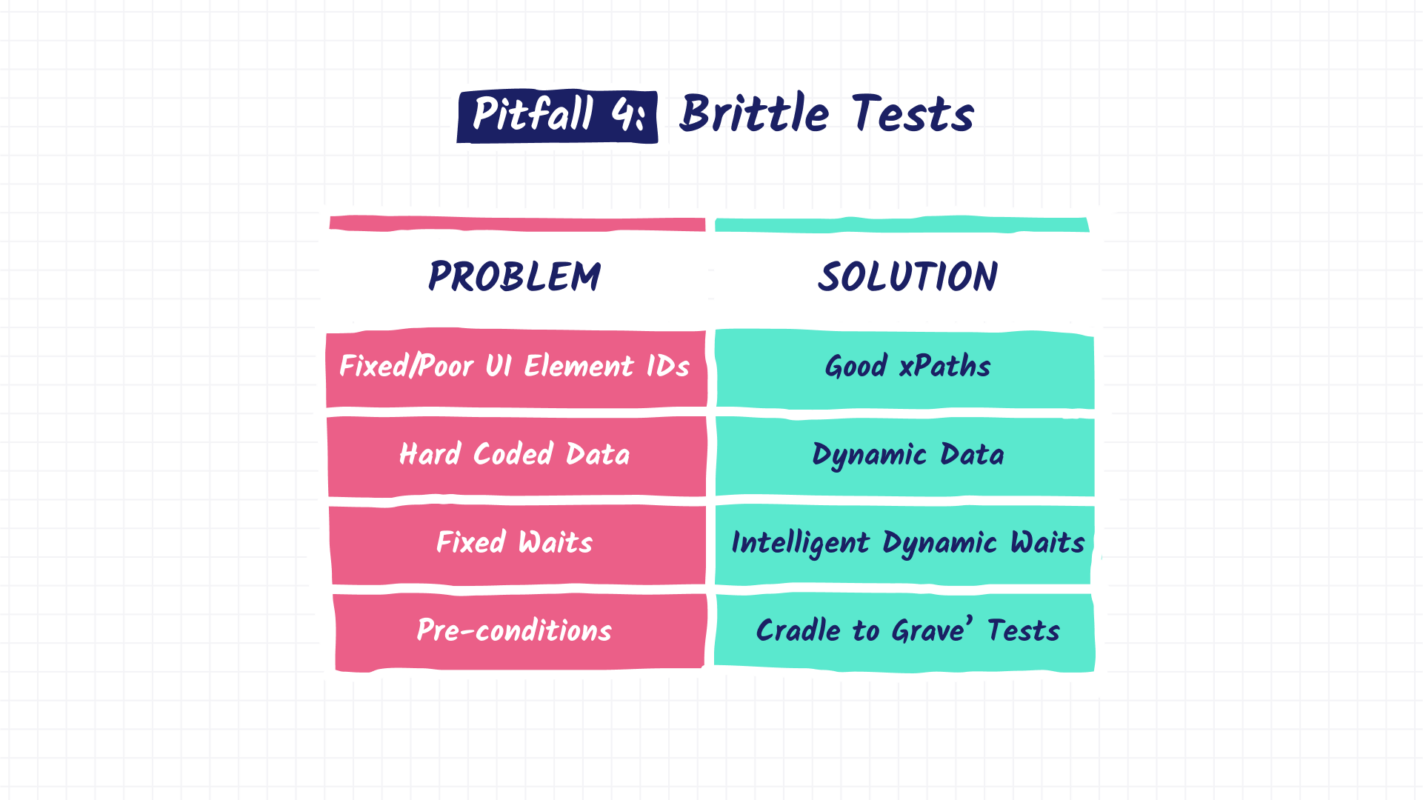
Pitfall 4 - Brittle Tests
Pitfall 5 – poorly designed tests
There are 6 main problems around poorly designed tests.
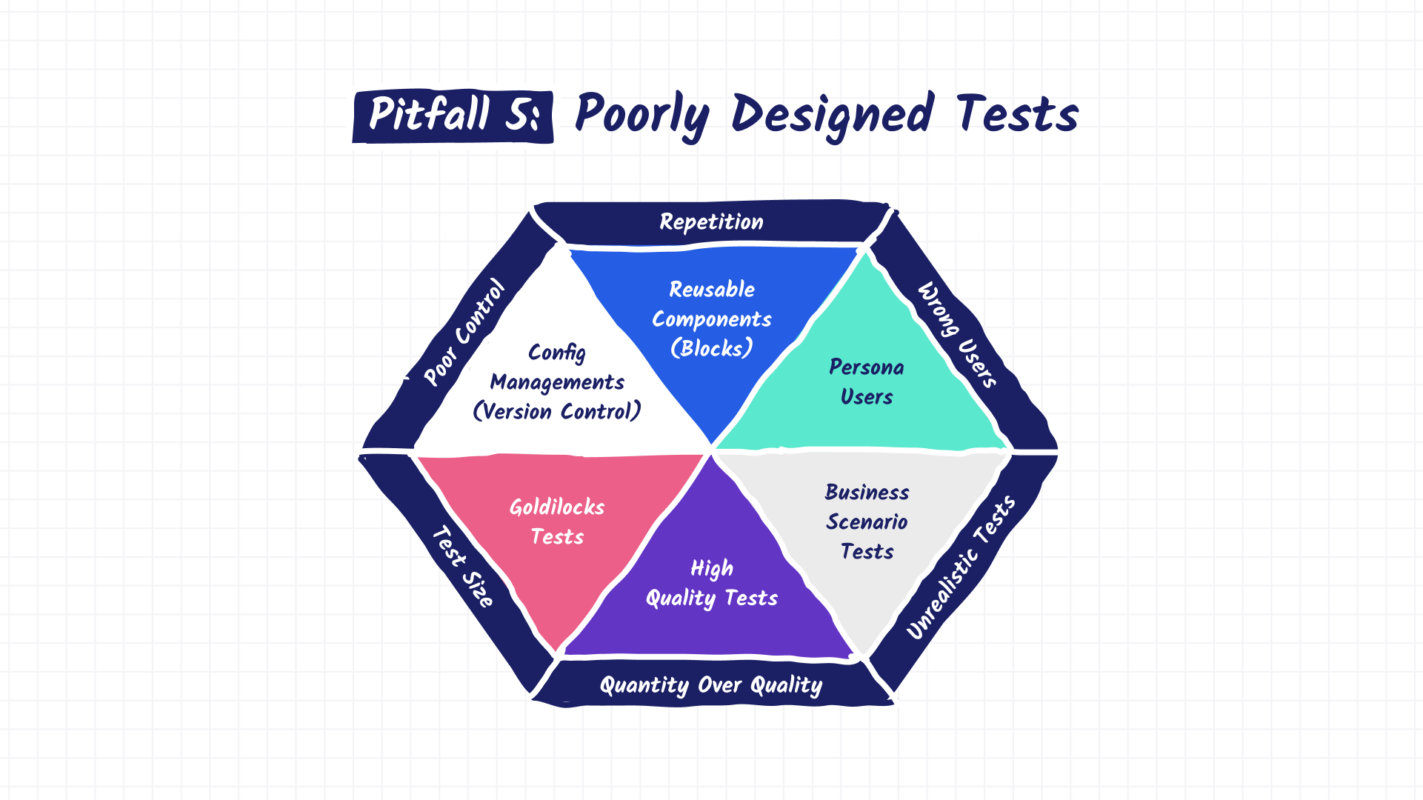
Pitfall 5 - Poorly Designed Tests
Pitfall 6 – Overlooking test maintenance
Tests must be maintained to stay in line with the functionality and to sustain the ideal 100% test coverage, which is often unattainable in practice. A dip in test coverage minimises the perceived value, resulting in testers neglecting the entire test automation suite.

Pitfall 6 - Overlooking Test Maintenance
Pitfall 7 – Not Integrated into DevOps lifecycle / CI / CD
The goal of most DevOps /CI/CD initiatives is to increase the speed and reduce the cost of delivery while maintaining quality.
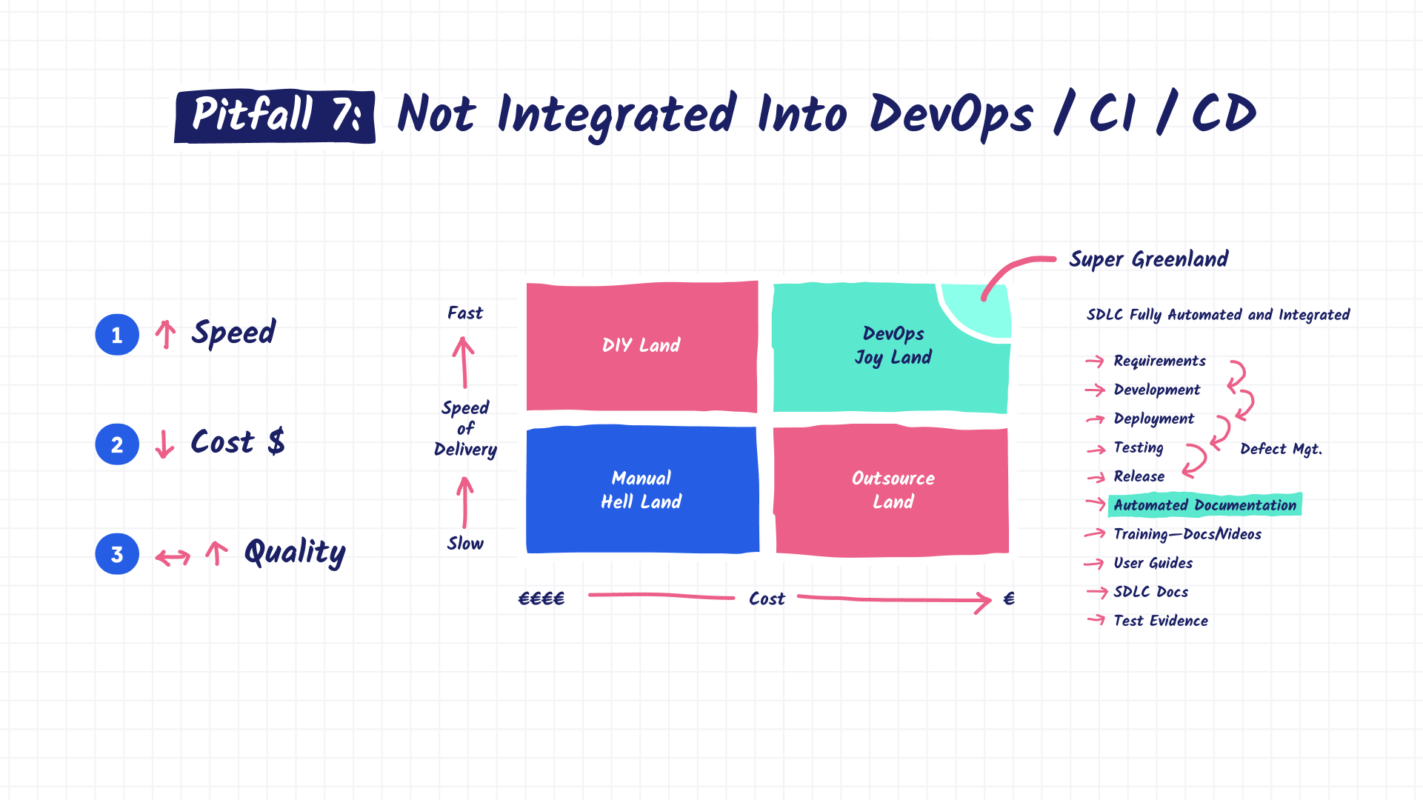
Pitfall 7 - Not Integrated into DevOps/ CI/CD
Customers fall into one of the four quadrants in the diagram above, with the ideal positioning being the DevOps Joy Land. In this quadrant, the DevOps lifecycle is fully automated and integrated, resulting in fast speed and low cost for the organisation.
Are you ready to take your organisation to the next level with the power of test automation? Contact us today to learn how AutomatePro’s suite of Test Automation, DevOps and Documentation tools can transform your business.